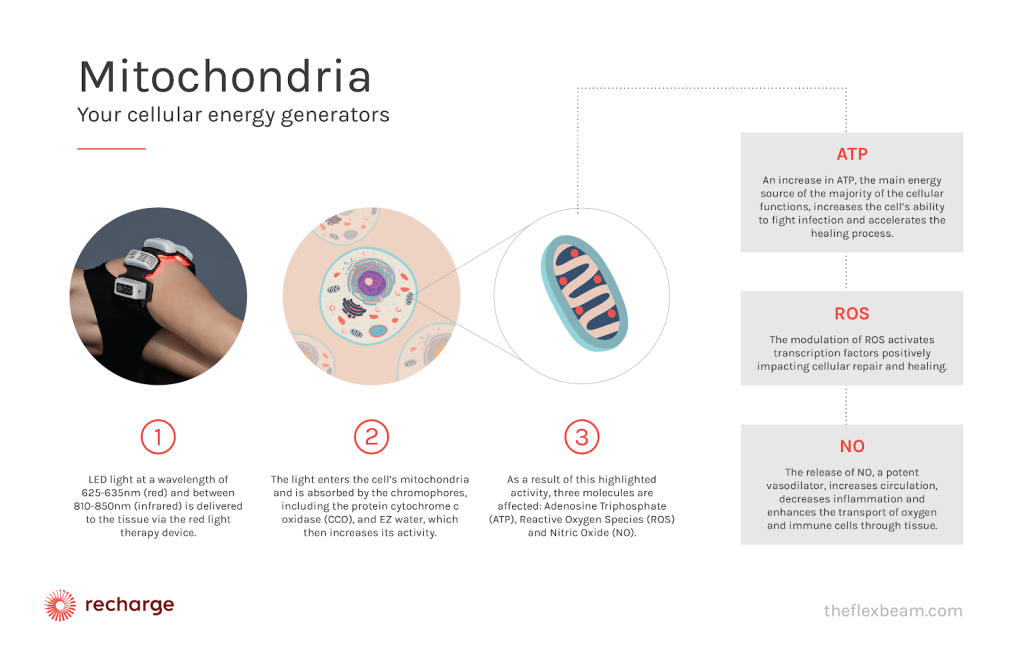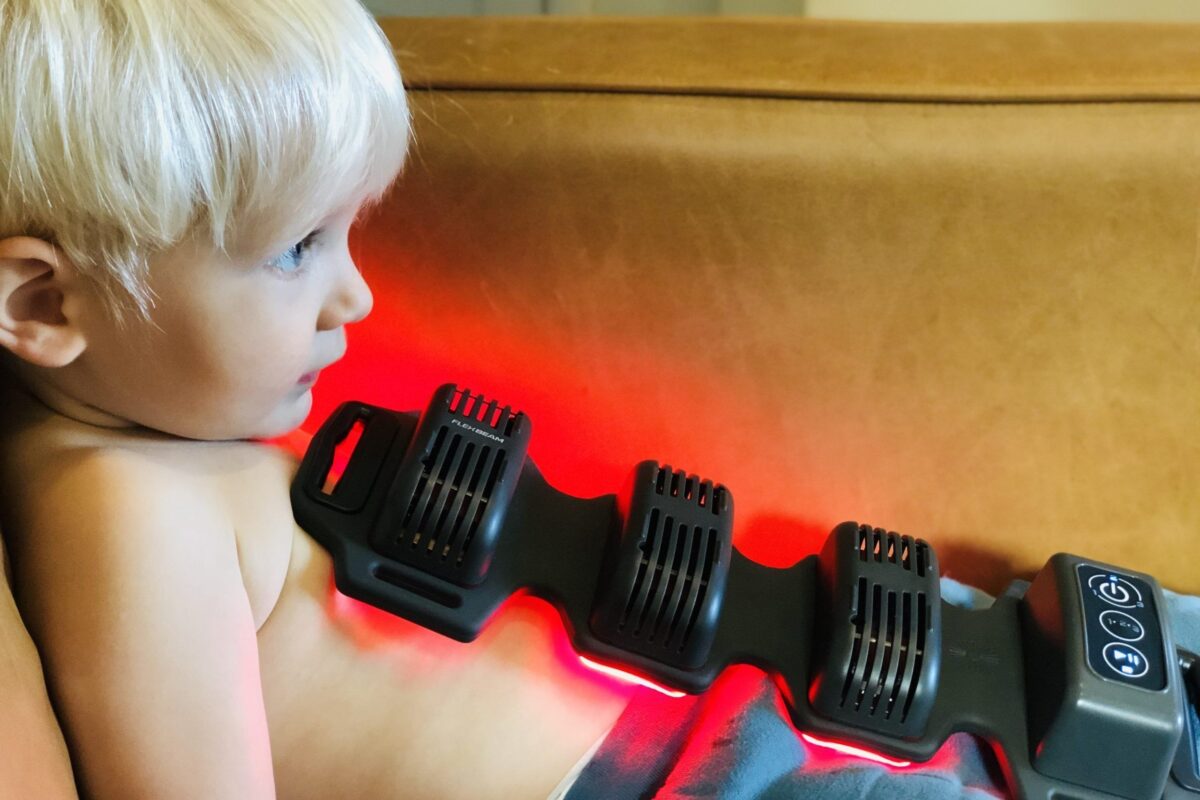Your cart is currently empty!
Is Red Light Therapy Safe?
Red light therapy is perfectly safe. It doesn’t use processes of ablation and heating for its healing effects, which means there are no resulting burns or scars.
You still want to be careful when exposing your eyes to red light. Just like you would not stare directly into the sun, you should not stare into your photobiomodulation therapy device.
Just remember that exposure to the sun is one way of our organism getting its vitamin D. On the other hand, everybody had a sunburn at some point in their lives – too much of a good thing can be detrimental. Fortunately, red light therapy is completely safe.
Photobiomodulation is the study of light in a form of therapy. Photobiomodulation (PBMT), low-level light therapy (LLLT), and light therapy – all of these terms, more or less, refer to the same thing.
Red light therapy, led-light therapy, low-level laser therapy, cold laser therapy, and many others are all types of photobiomodulation.
Low-level laser therapy or LLLT used to be the umbrella term for all the varieties of light therapy.
This is because the first studies involved using lasers, which is not the case today.
LEDs are what scientists use today because they are more cost-efficient and safer with no compromise on the quality of the therapy.
What Is the Photobiomodulation Process?

Photobiomodulation therapy involves exposing an organism to light so it can be changed/modulated in a certain way.
Photobiomodulation starts with photons coming into contact with those molecules of our body that are sensitive to it. One of the most sensitive photo-receptors is in the mitochondria.
Upon contact with these molecules, red and near-red light charge them. This means that the cells get energized like a battery.
This process triggers many beneficial effects. Among them is the release of nitric oxide (NO) into the bloodstream, the creation of cytochrome oxidase c and many more.
Furthermore, this translates into better intercellular communication, tissue reparation, immune system boosting, and improved blood flow, just to name a few.
There are a variety of ways photobiomodulation is applied for healing.
Types of Photobiomodulation
What is common to all types of photobiomodulation therapy is that the device needs to emit light that modulates physiology. Red light devices emit light that mainly falls in the range between 600-1500 nanometers.
Here’s a look at the difference between incandescent bulbs, laser and LED for red light therapy:
Incandescent bulbs combine the heating and the healing effects of certain wavelengths of light. The main difference between this type of photobiomodulation and LED or laser therapies is that LED and laser are ‘cold’ treatments – heat doesn’t have a role to play in these therapies.
Infrared saunas lack the healing effect of the light they emit because it is impossible to approach them close enough due to the heat. Additionally, there is the matter of possible thermal injury, as well as the fact that there are many conditions, such as hypertension, for which high temperatures are a contraindication.
Laser therapy is not a novel thing. It has been present for decades in many medical fields from orthopedy to dermatology. This type of photobiomodulation therapy device involves low-power lasers to distribute the light needed for therapeutic effects.
LED is short for light-emitting diodes. While laser emits a single wavelength light, which is very targeted, LEDs are not as coherent. This type of red light therapy device goes directly on the skin for optimal effects. It is possible to achieve deep tissue penetration up to 10 cm with these devices. This has profound effects.
Is Photobiomodulation FDA approved?
American Society for Laser Medicine and Surgery (ASLMS) claims that “PBM devices have been cleared for marketing by FDA through the Premarket Notification/510(k) process as adjunctive devices for the temporary relief of pain.”
Most prudent people want to see solid proof and extensive research before they believe something, and there is a wealth of research supporting photobiomodulation and red light therapy.
Here are some of the most important books and articles for those that want to explore the science behind this type of therapy.
Photobiomodulation Research Reading List
Here is a selection of scientific papers that confirm the effectiveness of photobiomodulation.
The Ultimate Guide To Red Light Therapy, Ari Whitten – Whitten’s book is the perfect start for anybody who wants to understand the complex science behind red light therapy. He dissolves all the myths and pseudoscience that surround red light therapy. Whitten offers detailed explanations of the red light therapy benefits and how to use it for optimal results.
Low-Level Light Therapy: Photobiomodulation (Tutorial Texts), Michael R. Hamblin et al. – If you already understand the basic concepts of red light therapy and photobiomodulation, this book is your next step. It offers an extensive and in-depth explanation about the main mechanisms of light therapy and the relationship between the light source and the therapy outcome.
Proposed Mechanisms of Photobiomodulation or Low-Level Light Therapy – This research was created to explore one of the most interesting mechanisms triggered by photobiomodulation – the boost of ATP production and other processes due to the effects of the photons on nitric oxide (NO). It includes the history of PBM, description of mechanisms and parameters.
The Effects of Low Level Laser Therapy on the Expression of Collagen Type I Gene and Proliferation of Human Gingival Fibroblasts (Hgf3-Pi 53): in vitro Study. – This study proves that photobiomodulation can be used to stimulate the production of collagen type I, as well as the gingival fibroblasts. Both of these are essential in healing and anti-inflammatory processes.
“Photobiomics”: Can Light, Including Photobiomodulation, Alter the Microbiome? | Photobiomodulation, Photomedicine, and Laser Surgery – The Microbiome is a crucial element of our wellbeing and both physical and mental health. This paper explains how PBM affects the microbiome and how we can put that into good use.
Review of light parameters and photobiomodulation efficacy: dive into complexity – This is an extensive review that attempts to study the efficacy of PMB on different tissues based on the number of mitochondria in them and compare it with the doses of light needed for response. It shows that tissues rich in mitochondria respond even to low dosages of light and that overdosing is as inefficient as under-dosing.
In conclusion, photobiomodulation is incredibly safe. It promises new treatments for a wide range of issues. Many more case studies will follow and new research will be done. We are witnessing the beginning of a new approach to healing and wellbeing.
Learn more about how photobiomodulation helps you stay healthy.
